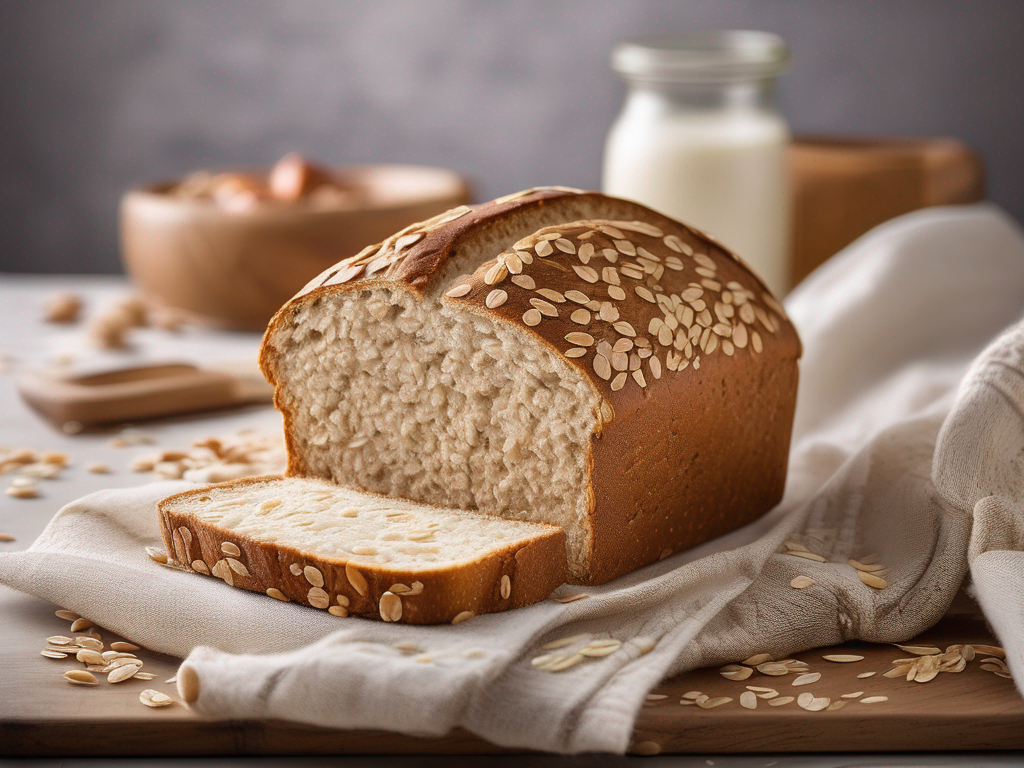
Is Your Oatmeal Bread Still Safe to Eat? Signs of Spoilage and Tips for Storage
Get Your Free Food Safety Cheat Sheet
30 most common foods with instant answers. Print it and stick it on your fridge—completely free!
Is Your Oatmeal Bread Still Safe to Eat? Signs of Spoilage and Tips for Storage
Oatmeal bread is a delicious and nutritious choice for breakfast or a snack. But like any perishable food item, it can go bad if not stored properly or consumed within a reasonable timeframe. In this blog post, we will discuss how to tell if your oatmeal bread has gone bad, and provide tips on how to store it to maximize its freshness and shelf life. (Oatmeal bread)
Signs of Spoilage in Oatmeal Bread
Oatmeal bread, like any bread product, can spoil due to various factors such as moisture, temperature, and exposure to air. Here are some signs to look out for to determine if your oatmeal bread has gone bad:
1. Mold Growth
- Check for any visible signs of mold on the surface of the bread. Mold can appear as fuzzy spots that are green, blue, or white in color.
- If you see mold on your oatmeal bread, it's best to discard the entire loaf to prevent the spread of mold spores.
2. Unpleasant Odor
- Sniff the bread to check for any sour, musty, or off-putting odors. A strong, unpleasant smell indicates that the bread has started to spoil.
- Fresh oatmeal bread should have a pleasant, slightly sweet aroma.
3. Texture Changes
- Feel the texture of the bread. If it feels overly hard, dry, or crumbly, it may have gone stale or started to spoil.
- Fresh oatmeal bread should be soft and slightly springy to the touch.
4. Taste Test
- If the bread passes the visual and smell tests, try a small bite to check for any off flavors or sourness.
- Spoiled oatmeal bread may taste sour, bitter, or generally unpleasant.
Proper Storage Tips for Oatmeal Bread
To ensure that your oatmeal bread stays fresh and safe to eat for as long as possible, follow these storage tips:
1. Store in a Cool, Dry Place
- Keep your oatmeal bread in a cool, dry place away from direct sunlight and moisture.
- Avoid storing bread near heat sources or in humid environments, as this can promote mold growth and spoilage.
2. Use Airtight Containers or Bags
- Transfer your oatmeal bread to airtight containers or resealable bags to help retain its moisture and prevent it from drying out.
- Make sure to seal the container or bag properly to keep air and moisture out.
3. Refrigerate for Longer Shelf Life
- If you don't plan to consume the oatmeal bread within a few days, consider storing it in the refrigerator to prolong its freshness.
- Place the bread in a sealed bag or container before refrigerating to prevent it from absorbing odors from other foods.
4. Freeze for Extended Storage
- To extend the shelf life of oatmeal bread even further, you can freeze it.
- Slice the bread before freezing to make it easier to thaw individual portions as needed.
Conclusion
By being aware of the signs of spoilage in oatmeal bread and following proper storage guidelines, you can enjoy this delicious and healthy bread for longer periods. Remember to inspect your oatmeal bread regularly for any mold growth, odor changes, texture issues, or off tastes. When in doubt, it's always best to err on the side of caution and discard any bread that appears spoiled. Proper storage in a cool, dry place, the use of airtight containers, and refrigeration or freezing when necessary can help maintain the freshness and quality of your oatmeal bread. Enjoy your bread responsibly, and stay safe and healthy!
For more information on oatmeal bread, check out our [oatmeal bread recipe](/food/oatmeal bread) for a delightful baking experience. (Oatmeal bread)
Authoritative Food Safety References
These agencies and university labs inform every tip and health precaution we publish.
USDA FoodKeeper – Cold Storage Guidelines
Official refrigerator, freezer, and pantry timelines maintained by the U.S. Department of Agriculture.
Visit USDA FoodKeeperFDA Produce Safety Rule & Grower Guidance
Field-to-fridge handling practices that prevent contamination of fruits, vegetables, and leafy greens.
Visit FDA Produce SafetyCDC Foodborne Illness Prevention Hub
Surveillance-backed guidance on pathogens, symptoms, and steps to reduce foodborne illness risk.
Visit CDC Food SafetyUC Davis Postharvest Technology Center
University research detailing optimal storage atmospheres for produce after harvest.
Visit UC Davis PostharvestPenn State Extension – Home Food Preservation & Safety
Peer-reviewed extension bulletins on safe canning, chilling, and reheating practices.
Visit Penn State ExtensionGet Your Free Food Safety Cheat Sheet
30 most common foods with instant answers. Print it and stick it on your fridge—completely free! Want more? Upgrade to the complete guide with 70+ foods.
Scan your food directly and get instant safety info using our AI-powered camera feature.